SUBJECTS
GRADE
Show Results
Railroad Meter
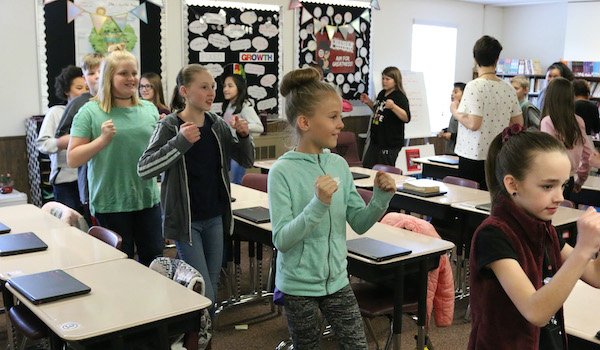
Lesson Summary
- Conduct songs in different meters.
- Research and present about historical songs with connections to the Transcontinental Railroad.
- Compare and contrast cultural groups impacted by the railroad.
Lesson Plan and Procedure
Lesson Key Facts
- Grade(s): 4, 5
- Subject(s): English Language Arts, Music, Social Studies, Native American, Tribe Approved
- Duration of lesson: Three sessions, 45 minutes each
- Author(s): Emily Soderborg and Patty Timbimboo-Madsen
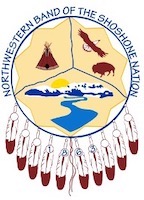
The Native American portion of this lesson was written in partnership with and approved by the Northwestern Band of the Shoshone Nation Cultural Specialist, Patty Timbimboo-Madsen and Paula Watkins, library consultant to the tribal nation. Before teaching this lesson, please explain to your students that there are many Indigenous tribes in the United States and that part of this lesson specifically focuses on a song of the Northwestern Band of the Shoshone Nation. Although other Native American groups were impacted by the railroad and are briefly discussed, the focus is on the Northwestern Shoshone. It is the hope of the Northwestern Shoshone that other native tribes will respect their choice to share this aspect of their history and culture.
Note: This lesson is one of a group of lessons created to teach about the Transcontinental Railroad through the arts. Titles of the other lessons can be found in the additional resources section below. For this lesson, students should have a basic understanding of the Transcontinental Railroad before beginning. If they need a quick overview, you could show them this three-minute video: https://www.youtube.com/watch?v=0CdAzizWiyI
Session 1: Finding the Meter for “Rock Island Line”
Teacher: Today we are going to explore how music connects with the Transcontinental Railroad. Do you know of any songs that are about trains or railroads, or that are connected with railroads, even if the song itself isn’t about railroads?
Listen to student responses.
Teacher: One song that has been recorded by many famous musicians is called "Rock Island Line.” As we listen to the song, find the steady beat of the music by tapping somewhere on your body.
Either play a recording (select one from the many options available: https://open.spotify.com/playlist/2r4hLH1F7T5Jb58VWsM6LA) or sing the song for students to listen to. Assess through observation how well students are tapping the beat, especially as the tempo changes.
Teacher: What did you notice about the song? As we listened, we were finding the beat, which is constant throughout the song, even if the speed of the beat got faster. We can connect that steady beat in a song to the heartbeat in our bodies. If you ran around the room, your heartbeat would get a little faster, but it would still pump steadily. If you rested for a while, your heartbeat might slow down. The speed of the beat is called the tempo, and in this song our tempo got faster with each section of the song.
Teacher: This next time, as we listen, see if you can hear a pattern of strongs and weaks within the beats. The pattern is going to be one of these three patterns: one strong beat followed by a weak beat (called two-meter), one strong beat followed by two weak beats (called three-meter), or one strong beat followed by three weak beats (called four-meter.)

Project the image of the three different patterns of beats as you explain two-, three-, and four-meter.
Teacher: If one pattern doesn’t seem to fit, try a different pattern. Try all of them until you are sure you have found the correct pattern that matches with the music. Put the strong beat on your lap and the weak beat on your shoulders.
Play the recording.
Teacher: Which meter pattern seemed to fit best with “Rock Island Line?” Show me on your fingers if you think this song is in two-meter, three-meter, or four-meter.
Assess students' responses. If the students are struggling with knowing which meter the song is in, try each meter all together as a class.
Teacher: Listen for where the words are accented more than other words. In two-meter the accented words would be “Rock Island Line she's a might-y good road, the Rock Island Line it's the road to ride.” Does that feel like it fits with the music? (The rhythm is syncopated, so you actually sing “line,” “road,” and “ride” slightly before the beat.) Are those the words we emphasize when we speak? Are too many syllables emphasized?
Teacher: Let’s try the other meters to double-check. In three-meter the accented words would be “Rock Island Line she's a mighty good road, Rock Is-land Line it's the road to ride.” Again, does that feel like it fits with the music? Did we emphasize the words we would normally emphasize in our speech patterns?

Teacher: The last meter to try is four-meter. The accented words would be “Rock Island Line she's a might-y good road, Rock Island Line it's the road to ride.” Does that feel like it fits with the music? Are the correct syllables emphasized? The pattern for this song best matches a four-meter pattern of strong, weak, weak, weak. Even though the two-meter also fits with the song, the syllabic emphases didn’t feel quite as natural as the four-meter.
Teacher: For this song, we are going to move our arms to the meter with a train-like motion. Circle your arms around like train wheels, showing an extra big “chug” going down on the strong beat of each measure. As you move your arms, sing the first section of the song with the recording. Let’s try it again, without the recording, and stepping on the beat while we continue to show the four-meter pattern with our arms moving like train wheels.
Teacher: Now, instead of moving our arms like train wheels, we are going to conduct the music. A conductor on a train is someone who directs where the train is going. A conductor in music is someone who directs where the music is going. The type of conducting we’re going to use today is called bounce conducting. Bounce conducting is where you conduct up and down, like bouncing a ball, rather than in a specific two-, three-, or four-beat pattern shape. With bounce conducting, the strong beat has a larger up-and-down motion, and the weak beats have a fairly small up-and-down motion. When you bounce a ball, how does your arm move? It moves a lot at the elbow, and only a tiny bit at the wrist. When conducting music, the motion is similar. Move your elbow more and your wrist only a tiny bit. On the strong-beat bounce, your arms should move approximately from your nose to your belly 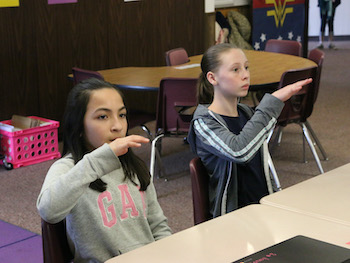 button. The weak beats should bounce approximately from your shoulder to your chest. Imagine bouncing a ball, and see if you can sing and bounce-conduct with me to that first part of “Rock Island Line.” Remember, we’re conducting in four-meter.
button. The weak beats should bounce approximately from your shoulder to your chest. Imagine bouncing a ball, and see if you can sing and bounce-conduct with me to that first part of “Rock Island Line.” Remember, we’re conducting in four-meter.
Sing through the first section of the song while conducting. If students need to concentrate on only conducting and not singing, play the recording for them to conduct to. If they can sing while they are conducting, it is a more musical experience, and it requires less moving back and forth to start and stop the music.
Finding the Meter for Other Songs
Teacher: We’re going to listen to a few more pieces of music today. Each of these songs has some connection with the Transcontinental Railroad. We’ll look into some of those connections later, but right now you are going to figure out what meter each of these songs is in. As you listen, the first step is to find the steady beat in the song. Next, you will figure out the strong-weak pattern. Try each of the patterns until you have found one that feels like it is the best fit. Once you have figured out the meter, transition to bounce conducting while the song is playing. Remember, the strong beat will be a larger bounce, and the weak beats will have much smaller bounce. This first song has a slower beat than was in “Rock Island Line.”
Play “Drill Ye Tarriers” for the class (https://www.youtube.com/watch?v=otWI9oNi0Rg). You can hear the slower beat by listening to the low guitar chords in the introduction.
Teacher: Show me on your fingers if you think this song is in two-meter, three-meter, or four-meter.
On any of the songs, if several students struggle to figure out which meter the song is in, try each meter all together as a class.
Teacher: Listen for where some words are accented more than other words. In two-meter the accented words in the chorus would be “Drill, ye tarriers, drill! Oh it’s work all day for sugar in your tay, Down be-yond the railway and drill, ye tarriers, drill.” Does that feel like it fits with the music? Are those the words we emphasize when we speak? We’ll try the other meters just to double-check. In three-meter the accented words would be “Drill, ye tarriers, drill! Oh it’s work all day for sugar in your tay, Down be-yond the railway and drill, ye tarriers, drill.” Again, does that feel like it fits with the music? Did we emphasize the words we would normally emphasize in our speech patterns? The last meter to try is four-meter. The accented words would be “Drill, ye tarriers, drill! Oh it’s work all day for sugar in your tay, Down be-yond the railway and drill, ye tarriers, drill.” Does that feel like it fits with the music? Are enough syllables emphasized?
Teacher: Both the two-meter and four-meter fit with the music, but the two-meter puts the emphasis on the right syllables, so it is the best fit for this song.

Teacher: This is a reminder that if you have other things you want to comment on about this song, we will get to look more in depth at these songs next time. However, we are going to save those questions and comments that aren’t about the meter of the song until later. Here is another song that connects with the Transcontinental Railroad. Listen to find the beat, then the meter of the song. It is called “Drum Song of Fengyang.”
Play “Drum Song of Fengyang” (https://www.loc.gov/item/ihas.200196394/).
After listening and allowing students to discover the meter for the song, discuss with students how they figured out that this song has a strong, weak, weak, weak pattern (four-meter).
Teacher: We will now listen to “Echo Canyon.” This song has a pretty fast beat. Listen carefully and find the beat, so that you can discover the meter of the song as well.
Play “Echo Canyon” (https://www.loc.gov/item/ihas.200197140/?loclr=blogflt—the music starts at 0:29).
After listening and allowing students to discover the meter for the song, follow a similar pattern as in the previous songs to discuss with students how they figured out that this song has a strong, weak, weak pattern (three-meter).
Note: Depending on the recording, and the notation of the song, “Echo Canyon” can also be in six/eight. Some students might bring this up. If they are feeling it in six/eight, it can be conducted either in three-meter, or in two-meter, with a strong/weak pattern. The sheet music shared in the song information sheet has the song in three-meter, but different sheet music published by the Daughters of the Utah Pioneers has the song in six/eight time.
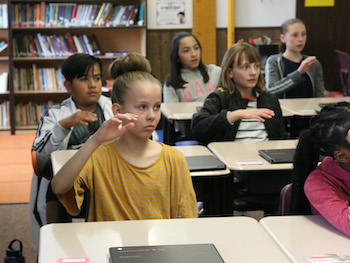
Teacher: Some songs do not have one meter throughout the entire song. These types of songs are called mixed-meter. The last song we’re going to listen to today has a mixed meter that switches between two-meter and three-meter. The singer also adds several short pauses for breaths throughout the song. This means that, to stay on the beat, you will need to slightly pause when he pauses. As you listen, your first focus should be on finding the steady beat. If you are up to the challenge, you can also figure out the mixed-meter pattern that switches between two and three.
Play “Ainkappata,” a Northwestern Shoshone song from Newe Hupia: Shoshoni Poetry Songs, sung by Earl Crum (https://digitalcommons.usu.edu/usupress_pubs/24/—download audio track 02 from this page).
Teacher: Were you able to feel the steady beat, even with the singer’s breathing? That one was more challenging than the others were. Did any of you try to find the pattern of strongs and weaks? What did you find? The pattern went two, three, two, three, three, three, three, three, and then it repeated that whole pattern two more times. We’ll listen to it one more time to see if we can follow the mixed-meter patterns.
Write the mixed-meter pattern on the board for students to follow. Play “Ainkappata” a second time, and follow the pattern while bounce conducting.

Teacher: Next time we are going to research “Rock Island Line” as a whole class. We are going to research each of the other songs in small groups. On your exit slip today, you need to decide which one of the other pieces of music you would most like to spend time learning more about and select a second choice as well. The songs you can choose from are “Drill, Ye Tarriers,” “Drum Song of Fengyang,” “Echo Canyon,” and “Ainkappata.” You will need to write a short reason for which you are interested in those two specific songs. Your reasons might include something about the words, something about the music itself, an idea of who might be singing the song, a picture the music created in your mind, or another reason you come up with. I will create groups based on the responses on your exit slips.
Session 2: Asking Questions to Make Connections
Before this session, prepare a folder of materials for each song to be researched. Also, assign students to groups ahead of time based on their responses from session one.
Play 30 seconds of each song again.
Teacher: All of these songs have some type of connection to the Transcontinental Railroad. To help us understand the Transcontinental Railroad, we need a little more background about the building of railroads in the United States.
Teacher: In 1830, with the first train in South Carolina, the American railroad was born. By 1835, dozens of local railroads had been put into place. Even though each of these tracks were short, only a few miles, people began to realize how much railroads could do. With every passing year, the number of these railway systems grew. Over 9,000 miles of track had been built by 1850. As the Civil War began, fewer new railroads were being built, but by the conclusion of the war, people saw the need for more railroad connections across the entire United States.
Teacher: To give ourselves additional information to think about, we’re going to watch a video clip that shows one way in which music like “Rock Island Line” was connected to the building of the railroad. This movie was recorded in 1929, 60 years after the Transcontinental Railroad was completed. Movies with sound were not invented until the 1920s, so this is one of the earliest video recordings available that shows people building railroads.
Play the gandy-dancers video clip (https://www.youtube.com/watch?v=c1O2X890tig).
Teacher: What did you notice in the video? How was music part of building this specific railroad? I noticed the people were keeping the beat of the song, and that helped them move the railroad tracks together. Looking at primary sources can give us more understanding, just like the video clip helped us learn something new. Each of the songs that we listened to are primary sources from the time period. They each give information, if we look at the details that can help us understand their connection with the Transcontinental Railroad. As we look deeper for information about the song, we can come to understand things more clearly as well. We can also recognize that music lasts a long time, but it doesn’t always stay the exact same, depending on how it is performed and, perhaps, how it is altered by the cultures that value the song. 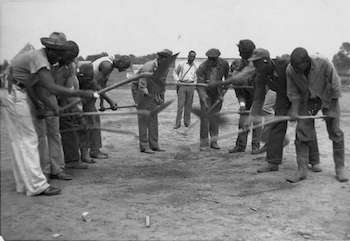
Teacher: The earliest recording we have of “Rock Island Line” is from 1934 of a group of prisoners singing for a man named John Lomax, who was making recordings of songs to try and preserve some history. Here’s a picture that many think are the actual men in the recording.
Listen to the first 20 seconds of the 1934 John Lomax field recording.
Teacher: This is more what the song would have sounded like as railroad workers were singing the song. The song changed depending on who sang it and why it was being sung.
Note: You can compare and contrast multiple versions of “Rock Island Line” to have students see how the song changed over time.
Teacher: We are going to research “Rock Island Line” together as a class.
Teacher: Before we look at additional sources, let’s ask a few questions to see if there is anything we can figure out just from the song itself. These questions will also guide us as we look at additional resources for information.
Questions to ask about each piece of music:
- What kind of structure or form does this song have? Can you hear large patterns in the song (e.g., distinct sections, verse/chorus, repetition)?
- What does the music sound like (i.e., what instruments or voices do you hear)?
- What is the song about?
- What does it mean within historical context? Are there words in the song that mean a different thing now than they did when the song was written?
- Who created this song? When was it written?
- What type of people probably performed songs like this during the time of the Transcontinental Railroad?
- From the reading, how many of these people helped build the Transcontinental Railroad?
- Why did they work for the railroad?
- What were their lives like?
- What did other people in America think about this specific group of people?
Read through the “Rock Island Line” information sheet as a class shared reading. Project the document or have copies made for students to follow along with the text. As you read, have students write down three facts that answer some of the questions. When the reading is completed, have them share at least one of the facts with a partner. Write the title of the song on the chart paper, to model how each group is going to create their own presentation. Go through each question listed above, and continue to model how to create a poster using the answers they found from the song and the informational text.
Teacher: We can discover more information from looking at a few pictures. These pictures help give a visual of what this song means and who originally might have sung it.
Attach the pictures to the presentation to create a finished product for students to refer to as they create their own presentations later.
Teacher: Even though this music is from 150 years ago, people must have liked it a lot to keep sharing it. We get to do something with this song that makes it our own. Here are a few ideas of things we could do:
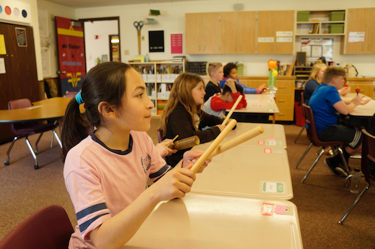
- Sing the song and teach the class a few of the lyrics (e.g., students could learn one verse or even just a few of the words that they thought were meaningful).
- Play instruments along with the recording.
- You could play the rhythm of the song (play the rhythm by matching the instrument sounds to the way the words go in the song).
- You could divide the class into two groups and play two different instruments for the strong beat and weak beats.
- You could figure out a rhythmic repetitive pattern (ostinato) to play throughout the entire song.
- Create a pattern using body percussion (stamp, pat, clap, snap), or perform with the recording.
- Choreograph movement to perform with the recording.
- Figure out a way to represent the music through a drawing that you can “follow” while the music is going.
Pick your favorite idea, close your eyes, and we will vote.
After students vote, take the next few minutes to create a musical experience to “Rock Island Line” with the entire class.
Group Research
Note: This research can be done with all of the groups doing research at the same time, or in a similar manner, as guided reading groups. If a teacher is not working with the groups, it would be best to make sure each group has an advanced reader that can help everyone in the group comprehend the few paragraphs explaining the music and the people. Even though the text has been simplified, it is intended for those a bit above elementary school reading levels.
Let students know which group they are in, what song they are researching, and where they will be gathering with their group.
Teacher: In just a moment, I will ask one student from each group to come get a folder of materials for your group. (Hold up each part of the information packet as you explain it to the students.) This folder contains information sheets about the song and the people who might have sung the song. It also contains pictures that you can look at to do additional research by pulling out details. It also has an instruction sheet defining the tasks your group is to complete.
- Start by reading through the list of bulleted questions from the instruction sheet.
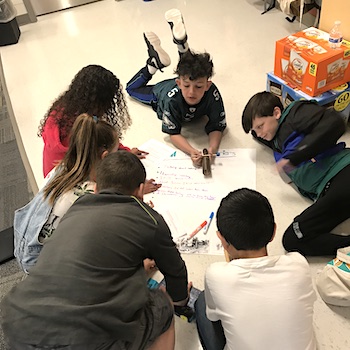
- Second, read the information about the song and the one page of additional information connected with the song. As one person (a teacher or an advanced student reader) reads, write down facts that you hear that answer the questions on the instruction sheet.
- Next, talk together as a group and share the facts you heard while the information was being read.
- Then prepare your visual presentation. Include a title (the title of the song) and answers to as many of the questions listed that you can find. (You must list the group of people who worked on the Transcontinental Railroad represented by this song.) Figure out how to display the pictures to help the rest of the class visualize the song and people you have researched.
- Last, decide on a musical way to share the song with the class. Have your group practice with the recorded music and be prepared to perform a one-minute segment for the rest of the class.
Have chart paper and markers available for each group.
Extension: If you have access to computers, students could create a digital presentation using PowerPoint or Prezi, rather than a poster. This will require additional time, but it would be a great tie-in with technology.
Give students the remaining time to work on their presentations and short musical performances.
Session 3: Presentations and Performances
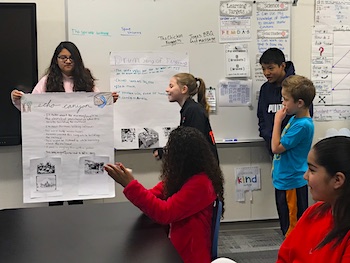 Allow the groups approximately five to seven minutes each to orally present their research about the background of their songs and to perform their own arrangement of the song.
Allow the groups approximately five to seven minutes each to orally present their research about the background of their songs and to perform their own arrangement of the song.
Teacher: Before the presentations start, please remember what it means to be a good audience member. As other groups are presenting and performing, write down any questions you have about the things you learned from each presentation. We will have a chance to ask the group questions after they are finished.
Conduct a brief whole-class discussion based on these responses from the audience after each group’s presentation. When all the presentations are finished, have the students come to the carpet with a pencil.
Compare and Contrast
Teacher: We are going to compare the songs researched in our groups using a compare-and-contrast chart.
Draw a chart on the board that looks like the following chart. Depending on the space available, you might need to draw two charts in different locations, so that once one chart is full, the next chart can be used.

Pass out at least one Post-it note to each student in the class.
Teacher: We are going to write facts about the songs we researched. My fact says, “This song has a connection to the Transcontinental Railroad.” I’m going to place this Post-it note in the left-hand column of our chart and then mark an X in each column, showing that it is true for all of the songs. Now, it is your turn to take 15 seconds and write a fact on your Post-it note about one of the songs.
Give students time to quickly write a fact.
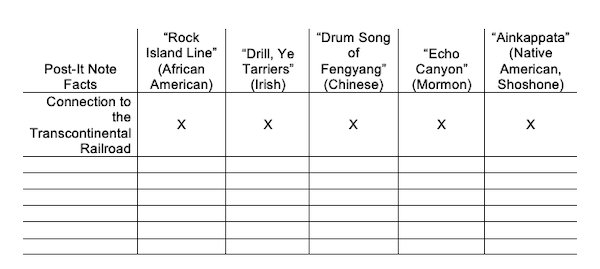
Teacher: Is there a volunteer that would like to share his or her fact and mark the columns of the chart which he or she feels matches the fact? (Have one student come up.)
Teacher: Show me a thumbs-up if you agree or a thumbs-down if you disagree with the columns marked.
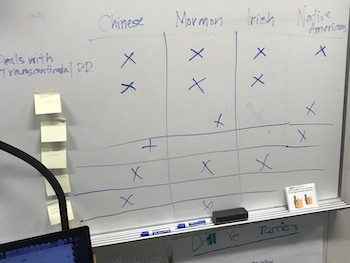 For example, if a student writes, “This song’s lyrics are about people who worked building railroads,” the columns for “Echo Canyon” and “Drill, Ye Tarriers” would be marked.
For example, if a student writes, “This song’s lyrics are about people who worked building railroads,” the columns for “Echo Canyon” and “Drill, Ye Tarriers” would be marked.
If a student writes “This song is sung in another language,” the columns for “Drum Song of Fengyang” and “Ainkappata” would be marked.
After confirming the fact-matching columns as a class, have the student adjust the columns marked, if necessary.
Continue this process until everyone has had the opportunity to share a fact about the songs and mark it in the proper columns of the chart.
Teacher: Turn to your neighbor and tell him or her one fact you learned about the Transcontinental Railroad that you find really interesting.
As time allows, listen to sections of all of the pieces again while bounce conducting.
Learning Objectives
- Compare and contrast music connected with the Transcontinental Railroad.
- Conduct short research projects.
- Identify how diverse groups of people were impacted by the building of the Transcontinental Railroad.
- Identify and conduct music in two-, three-, and four-meter.
- Interact with contrasting pieces of music.
- Describe in writing the reason for selecting certain music to further research.
Utah State Board of Education Standards
This lesson can be used to meet standards in many grades and subject areas. We will highlight one grade’s standards to give an example of application.
Grade 5 English Language Arts
- Standard 5.R.14: Compare stories in the same genre on their approaches to similar themes and topics. (RL)
- Standard 5.W.4: Conduct short research projects to craft an argument or answer a question.
Grade 5 Social Studies
Standard 5.4.1: Use evidence from multiple perspectives (for example, pioneers, 49ers, Black Americans, Chinese Americans, Native Americans, new immigrants, people experiencing religious persecution) to make a case for the most significant social, economic, and environmental changes brought about by Westward Expansion and the Industrial Revolution.
Standard 5.4.2: Use primary sources to explain the driving forces for why people immigrated and emigrated during the 19th century, as well as the ways that movement changed the nation.
Grade 5 Music
- Standard 5.M.P.7: Perform and identify rhythm patterns in two-, three-, and four-beat meters using body percussion, voice, and simple instruments.
- Standard 5.M.R.1: Listen to and interact with a variety of contrasting music.
- Standard 5.M.R.2: Listen for and identify form, meter, rhythm, timbre, mood, tempo, melody, texture, and harmony/tonality.
- Standard 5.M.R.8: Describe, verbally or in writing, the reason for selecting certain music to listen to or perform, including reference to music elements, skills, purpose, cultural, or historical connections.
- Standard 5.M.CO.4: Experience and explore music which connects us to history, culture, heritage, and community.
Equipment and Materials Needed
- Sound system to play audio recordings
- Projector to show video clips
- Meter beat map (attached PDF)
- Music recordings:
- “Rock Island Line,” select one from the many options available: https://open.spotify.com/playlist/2r4hLH1F7T5Jb58VWsM6LA
- “Rock Island Line,” 1934 John Lomax field recording of Kelly Pace and other prisoners: https://www.youtube.com/watch?v=0NTa7ps6sNU
- “Drill, Ye Tarriers,” Smithsonian Folkways recording: https://www.youtube.com/watch?v=otWI9oNi0Rg
- “Drum Song of Fengyang,” Library of Congress recording: https://www.loc.gov/item/ihas.200196394/
- “Echo Canyon,” Library of Congress recording: https://www.loc.gov/item/ihas.200197140/?loclr=blogflt
- “Ainkappata” a Northwestern Shoshone song from Newe Hupia: Shoshoni Poetry Songs, sung by Earl Crum: https://digitalcommons.usu.edu/usupress_pubs/24/ (download audio track 02)
- Session 1 exit slips (attached PDF)
- Gandy dancers video clip (https://www.youtube.com/watch?v=c1O2X890tig)
- various classroom instruments (optional)
- Prepare a folder of materials for each song to be researched that includes the following:
- Chart paper and markers
- A way for each group to listen to music online (to prepare music presentation)
- Post-it notes and pencils
Additional Resources
This lesson was created thanks to a grant from the National Endowment for the Arts and the Utah Division of Arts & Museums.
- This is one of several lessons created to teach about the Transcontinental Railroad. The other lessons in the unit include the following:
- A great video clip explaining the Transcontinental Railroad, if students need to build their background knowledge before beginning the lesson: https://www.youtube.com/watch?v=0CdAzizWiyI
Another, longer video of gandy dancers lining track in the 1960s: https://www.youtube.com/watch?v=lu7hBuhr-Ls
- This book has an entire chapter titled “Music in Context” which explores how looking at the different facets of a work will help us develop a greater understanding and appreciation for it. Ideas for questions asked about musical pieces in this lesson came from this chapter: Barrett, J., McCoy, C., & Veblen, K. (1997). Sound Ways of Knowing. New York, NY: Schirmer Books.
Image References
Image 1: James Huston.
Image 2: The Northwestern Band of the Shoshone Nation.
Image 3: James Houston.
Image 4: Emily Soderborg.
Images 5-9: James Huston.
Image 10: https://picryl.com/media/african-american-convicts-working-with-shovels-possibly-the-singers-of-rock.
Images 12–16: Emily Soderborg.
© Brigham Young University and the Northwestern Band of the Shoshone Nation

www.education.byu.edu/arts/lessons
 Download
Download